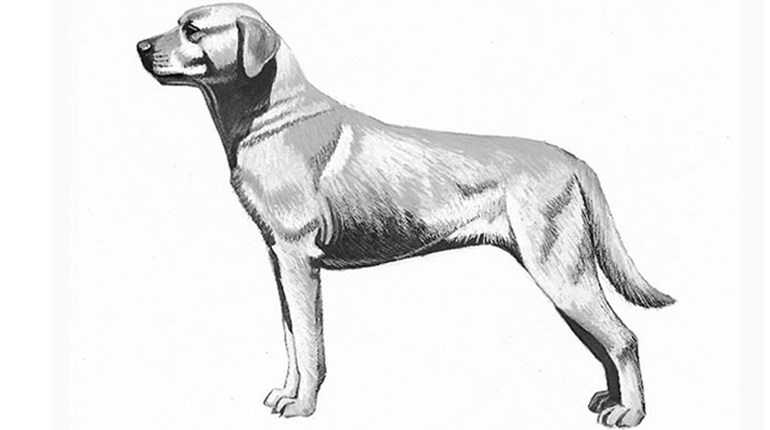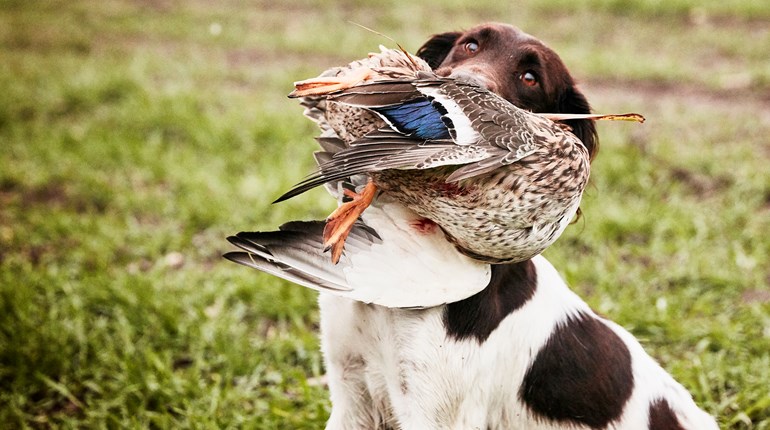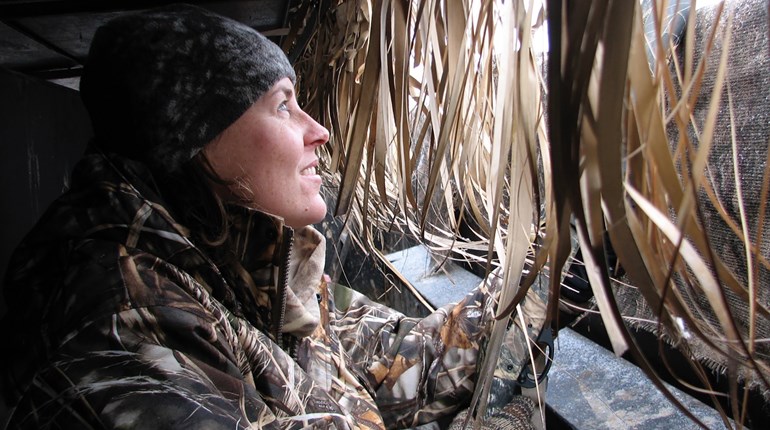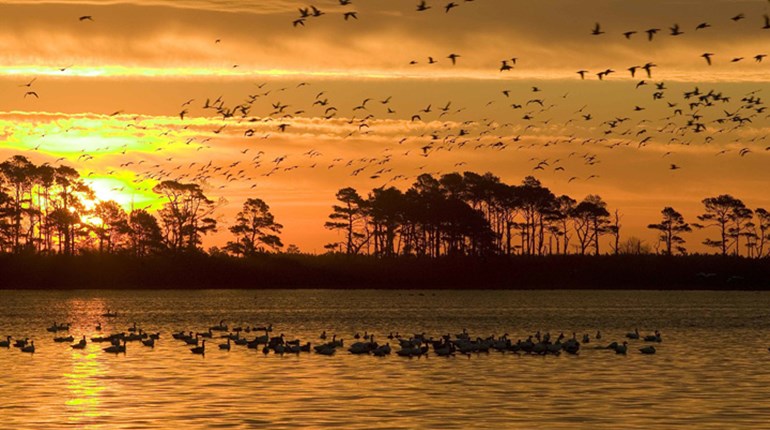
Light snow fell from a slate gray sky that seemed to stretch to the surface of the Potomac River. We’d just filled our bluebill limit, and Eric’s chocolate Lab Dixie completed a retrieve as Jon got breakfast going.
Then another string of divers rocketed toward our spread.
“More bluebills,” Jon said.
I concurred, admiring them as they pitched to the center of our spread. But as they banked away, a profile view revealed that these weren’t scaup at all.
“Uh, those are canvasbacks, guy,” Eric said.
I literally dropped to my knees in despair. Not only could we have shot canvasbacks on that day a few years back, but a prime, mount-worthy drake remains my elusive white whale.
The failure to properly identify ducks on the wing can lead to such missed opportunities or even land you on the wrong side of the law. Therefore improving this skillset should be every hunter’s ongoing effort. Here are six keys to identifying ducks on the wing.
1. Context Clues
An often-overlooked aspect of waterfowl identification involves narrowing down the potential species to your region and time of year. For instance, I hunt primarily creeks and farm ponds in central Pennsylvania. The ducks I’m likely to see include mallards, wood ducks, blacks, gadwalls and the occasional ringneck. I may even see a few teal, but that can usually be ruled out after Thanksgiving. However, only on the rarest of occasions have I spotted a big-water diver and I’ve but once spotted a presumably very lost sea duck. So, keep in mind the ducks you’re likely to see on a particular day in a particular place—this will really narrow your list and help you identify ducks through simple circumlocution. For example, in my area, if I spot a group of large puddle ducks on the horizon, I know I’m almost certainly looking at mallards or blacks.
2. Contrasting Colors
When you seek to identify waterfowl, keep in mind that in the first hour or two of light, many colors won’t be visible. In low light, contrasting colors are your friend. You may think that a mallard’s iridescent, green head is its most readily identifiable feature; however, at dawn I find the sharp contrast of the drake’s chestnut breast against its silver abdomen is much more easily seen. Same goes for the dark head and breast of the scaup against its light underside; the gadwall’s white speculum against an otherwise drab body; and the wigeon’s brilliant white belly. These identifying colors are by no means absolutes, but they are what works for me. Point is, contrast shows up during the hours when you’re most likely to see ducks. It’s up to you to find identifiable, contrasting shades that work for you given the predominate species in your area.
3. Sound
This is a big one—hunters who commit to memory the many duck vocalizations are a big step ahead. It’s very possible to identify ducks based on sound before you even see them. The “shoo-shee-shoo” of a wigeon; the whistle of a pintail or teal; a redhead’s meow; the guttural quack of a drake mallard; the gadwall’s short, almost comical quack; the squeal of a wood duck—these distinct sounds arguably reveal the identity of a duck even more accurately than observation. Plus you can call more quickly with an appropriate duck call.
Identifying sounds don’t necessarily include vocalizations alone, though. The sound of whistling wings overhead not only fills your belly with butterflies, but each duck has a subtly distinct whistle. From the extremely loud goldeneye (hence its nickname, “whistler”) to the slower, powerful cadence of the mallard, through careful attention you can learn to associate a species with the sound of its wingbeats.
4. Sun at Your Back
Wind direction is probably the most common factor determining how hunters set up and arrange their spreads. After all, as a general rule, if you set up with the wind at your back, the ducks are more prone to providing easy, incoming shots. However, American Hunter managing editor Jeff Johnston once suggested I try worrying less about the wind and instead set up with the sun at my back. I gave it a trial run and I’ve never gone back.If the sun is at your back, it is not in your eyes—it is, however, in the bird’s eyes, interfering with their ability to spot you. For the purpose of this article, there’s an even greater advantage: Sunlit birds flash colorful plumage and are easily identified by practically anyone with a rudimentary knowledge of waterfowl.
So, try setting up with the sun at your back, regardless of the other weather conditions. You can still arrange your decoys according to the wind.
5. Silhouette
To me, the most impressive skill in duck hunting doesn’t involve shooting, training dogs or even calling—I’m amazed by those who can identify silhouetted ducks in low-light conditions, often at a great distance. I’ve shot with guides who could identify species practically before I could tell whether we had puddlers or divers on the horizon. It’s a skill that must be achieved through experience, but with conscious effort you can increase the rate of learning. Be observant. Note how the wood duck’s squared-off backside differs from a pintail’s slender, graceful form. The neophyte may have trouble distinguishing a gadwall from a mallard, until he recognizes the gray duck’s smaller, more rounded form. The dramatic, sloping head of the canvasback is an obvious tell, and yet those who don’t often gun them may not immediately distinguish them from redheads or even bluebills. As noted in the introduction, I don’t claim to be perfect in this regard.
The formation of the flock can also assist your ID efforts while the birds are in silhouette. Swarming, darting teal; a line of divers; a circling ball of mallards—careful observation of how certain ducks fly in formation can really help you rule out certain species, if not make a positive identification altogether.
6. Experience
Of course, you can read about duck identification and study their colors in bird books all you want, but there’s no substitute for experience. Last season an avid deer hunter joined my friends and me in the blind. He remarked that duck ID seemed impossible, and wanted to know how we were able to call out the ducks so quickly.
I provided him with some of the tips in this article, but, honestly, sometimes I catch a glimpse of a duck, I know exactly what it is, and I have no idea how I made the determination. As you look at more and more ducks, you’ll find that your brain trains itself to identify them. You’ll spot ducks off the edge of your spread and immediately know what they are as if by instinct. You can foster this process, of course, by spending time in the blind, but scouting missions and even waterfowl observation during the northerly spring migration are beneficial. Basically, anytime you can observe ducks, grab a pair of binoculars and get after it. You may even find you enjoy it.
And you’ll certainly experience more enjoyable hunts. The ability to ID ducks on the wing won’t just make you a better hunter and keep you on the right side of the law—it’s downright fun to know what you have working the blocks. The beauty and diversity of species is what elevates duck hunting above so many other pursuits. So, learn to distinguish the birds. You’ll better connect with them and it’s downright fun.




































